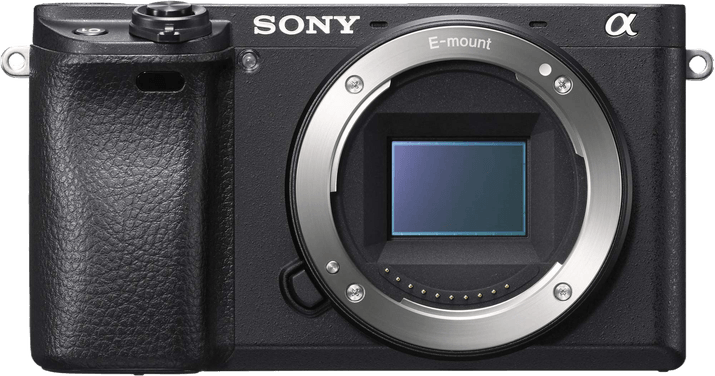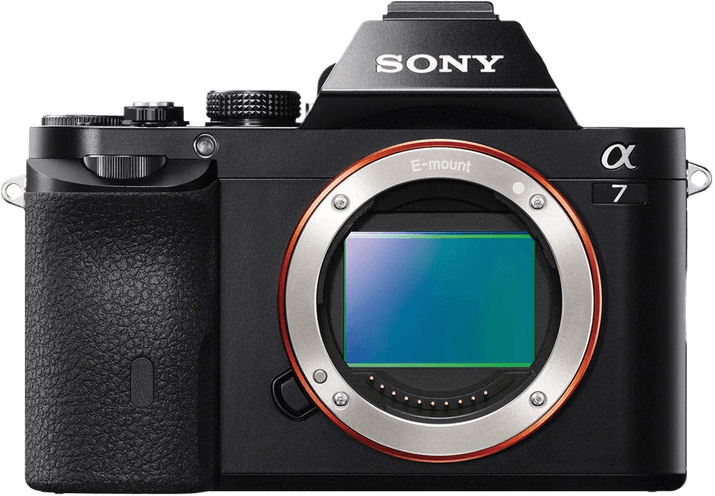Sony a6500 vs a7 Comparison
Sony a6500

Sony a7

The Sony a6500 outperforms the Sony a7 with a score of 72/100, compared to the a7’s 63/100. Both cameras are mirrorless and share a similar launch price range, with the a6500 at $1400 and the a7 at $1700. The a6500 has a smaller and lighter body, measuring 120 x 67 x 53mm and weighing 453g, while the a7 measures 127 x 94 x 48mm and weighs 474g.
The a6500’s higher score reflects its improved performance and features. Its compact size and lighter weight make it more portable and convenient for photographers. On the other hand, the Sony a7, despite its lower score, was a strong contender in 2013 when it was released, and it still offers quality performance at a slightly higher price.
Taking into account their respective scores, release years, and specifications, the Sony a6500 is the better choice for photographers seeking a more advanced and portable camera. However, the Sony a7 remains a viable option for those who prioritize affordability and are not concerned about the latest advancements.
Sony a6500 vs a7 Overview and Optics
The Sony a6500 comes out on top in our optics comparison with a score of 74/100, while the Sony a7 trails just behind with a score of 70/100. Both cameras share a number of specifications, such as a CMOS sensor type, Bionz X processor, and the Sony E lens mount. However, there are significant differences that set the a6500 apart as the winner in this category.
The Sony a6500 has 24.2 megapixels, a slightly higher resolution compared to the a7’s 24 megapixels. Furthermore, the a6500 has a superior shooting speed of 11 frames per second, more than double the 5 frames per second offered by the a7. The a6500 also has a built-in image stabilization feature, which is absent in the a7. This allows for sharper images, especially in low light or when using longer lenses.
On the other hand, the Sony a7 does have certain advantages over the a6500. The a7 boasts a full-frame sensor, which generally provides better image quality, especially in low light situations. The a7 also has a higher DXOMARK score for the sensor at 90, compared to the a6500’s score of 85. However, these advantages are not enough to surpass the overall performance and features of the a6500.
Taking into account the shared features and differences between these two cameras, it is clear that the Sony a6500 is the better choice in terms of optics. Its higher resolution, faster shooting speed, and image stabilization make it a more versatile and capable camera, while the Sony a7’s advantages do not provide enough of an edge to overcome these benefits.
Sony a6500 vs a7 Video Performance
The Sony a6500 outperforms the Sony a7 in terms of video capabilities, scoring 77 out of 100 compared to the a7’s score of 56. Both cameras share some common video features, such as the lack of built-in time-lapse functionality. However, the a6500 has clear advantages that contribute to its higher score.
One significant advantage of the Sony a6500 is its maximum video resolution of 4K (3840 x 2160), while the Sony a7 only offers Full HD (1920 x 1080) resolution. This higher resolution allows the a6500 to capture more detailed and sharper video footage, which is particularly useful for professional videography or large-screen display.
Another notable difference between the two cameras is their maximum video frame rate. The Sony a6500 can record at up to 120fps, whereas the Sony a7 is limited to 60fps. This higher frame rate in the a6500 enables smoother slow-motion playback and better motion capture, which is essential for sports or action videography.
Despite these advantages, the Sony a7 still has its merits in video recording. The camera’s lower score does not necessarily mean it is a poor choice for video recording. The Full HD resolution and 60fps frame rate are sufficient for casual videography and general use. Additionally, the lower resolution may be beneficial for users who require smaller file sizes or faster processing times.
Taking all these factors into account, it is clear that the Sony a6500 is the superior camera for video recording, offering higher resolution and frame rate capabilities. However, the Sony a7 remains a viable option for those who do not require the utmost video quality and performance.
Sony a6500 vs a7 Features and Benefits
The Sony a6500 triumphs over the Sony a7 with a feature score of 81/100 compared to the latter’s 57/100. Both cameras share common specifications such as a 3-inch screen size, flip screen, lack of GPS, and WiFi connectivity. However, the a6500 outperforms the a7 in certain aspects, while the a7 has its own advantages as well.
The Sony a6500’s superiority is evident in its touchscreen feature and Bluetooth connectivity. The presence of a touchscreen allows for more intuitive and efficient control of the camera’s settings. Additionally, Bluetooth connectivity provides seamless pairing with compatible devices, making it easier to transfer files and remotely control the camera.
On the other hand, the Sony a7 boasts a higher screen resolution of 1,230,000 dots, compared to the a6500’s 921,600 dots. This results in a sharper and more detailed display, which can be beneficial for accurate framing and reviewing of images.
Despite the a7’s advantage in screen resolution, the a6500’s higher feature score, touchscreen, and Bluetooth capabilities make it a more versatile and user-friendly camera. Conversely, the a7’s higher screen resolution may attract photographers who prioritize image quality on the camera’s display. Ultimately, the choice between these two cameras depends on the individual’s preferences and priorities, as both cameras have their strengths and weaknesses.
Sony a6500 vs a7 Storage and Battery
The Sony a6500 and the Sony a7 both score 21/100 in storage and battery, showing no difference in their overall performance in this aspect. They share common specifications, including one memory card slot, compatibility with SD/SDHC/SDXC and Memory Stick Pro Duo cards, and using the NP-FW50 battery type. Neither camera offers USB charging.
However, the Sony a6500 has a slight advantage with a battery life of 350 shots, compared to the Sony a7’s 340 shots. This difference may not be significant for casual users, but for those who need extended shooting times, the a6500 is the better option.
On the other hand, the Sony a7 accepts Memory Stick Pro Duo / Pro-HG Duo cards, providing users with more storage options. This can be beneficial for photographers who already own these card types or require faster write speeds.
Considering the storage and battery aspects, both cameras have their advantages. The Sony a6500 offers a marginally longer battery life, while the Sony a7 provides additional memory card compatibility. The choice depends on the user’s specific needs and preferences.
Sony a6500 vs a7 – Our Verdict
Are you still undecided about which camera is right for you? Have a look at these popular comparisons that feature the Sony a6500 or the Sony a7:

